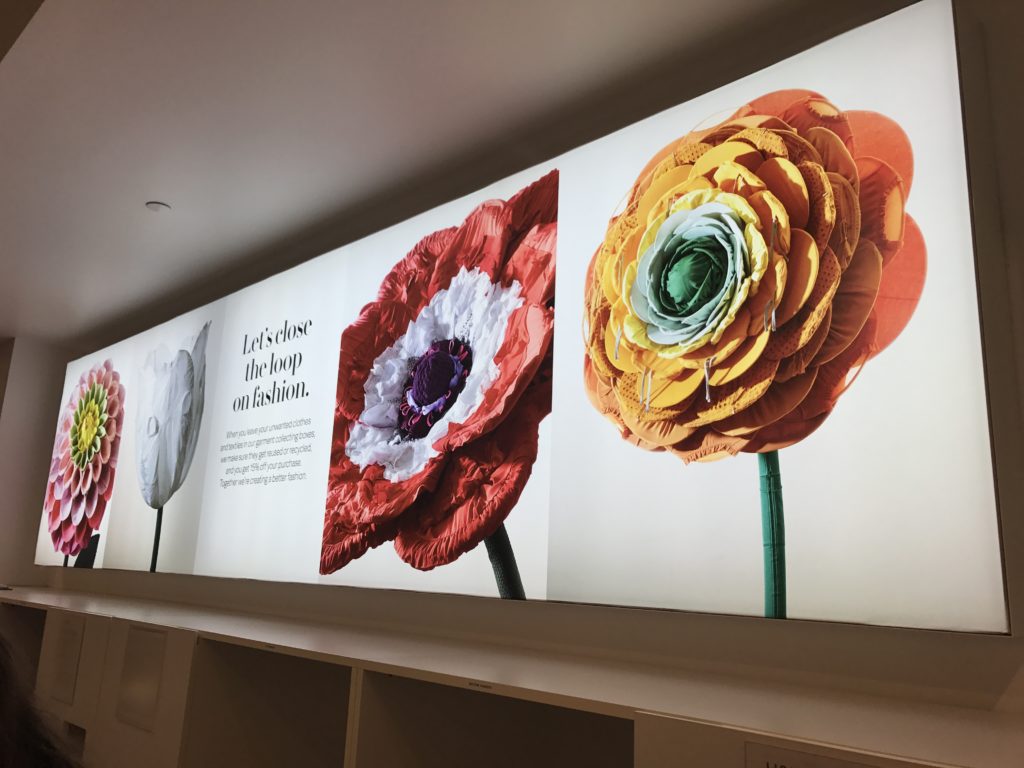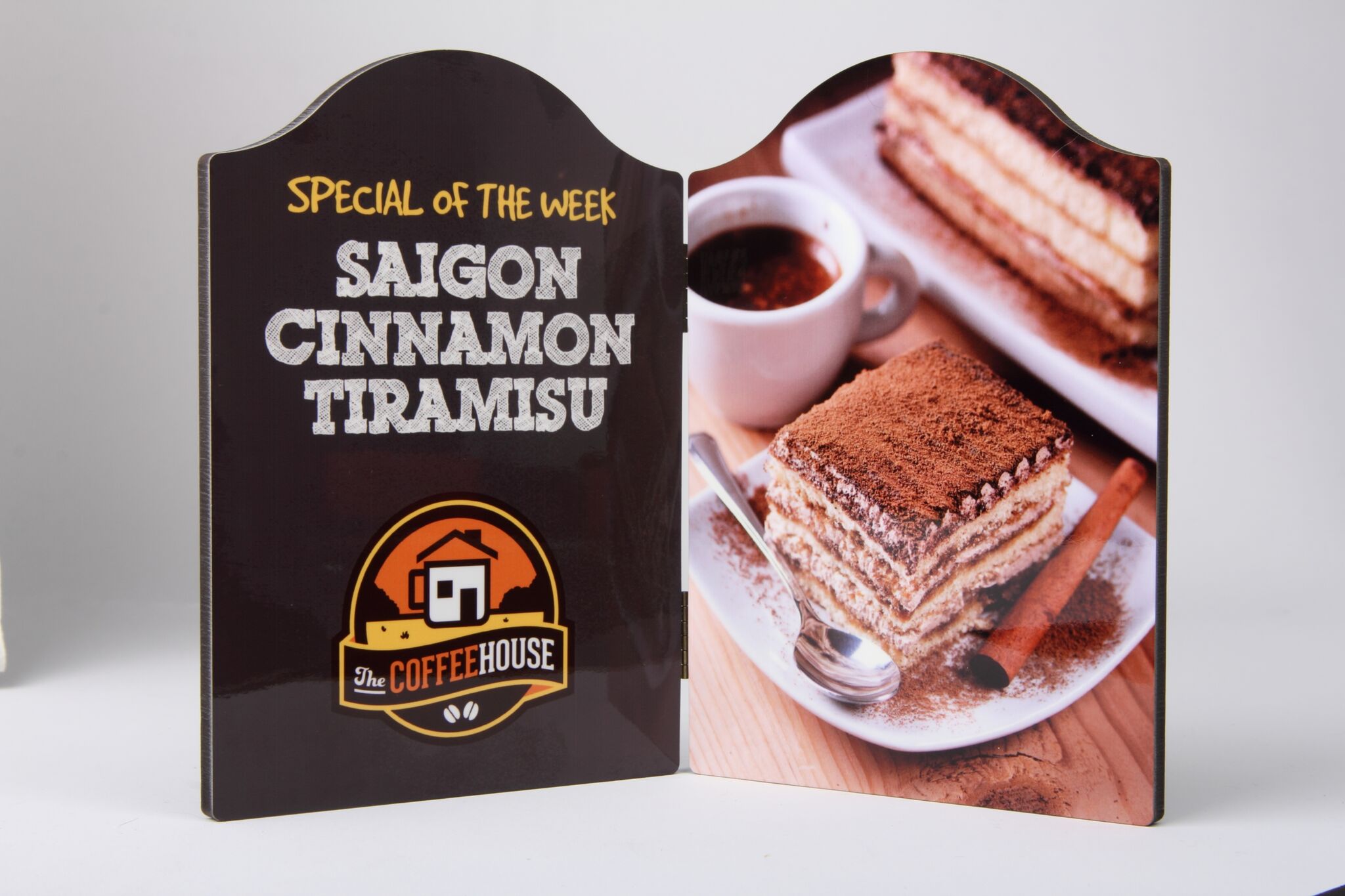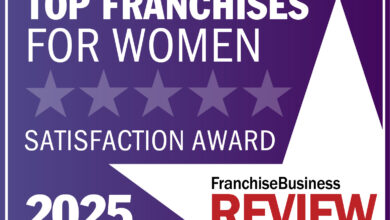Most sign industry professionals are already familiar with screen printing and digital printing to some extent but may not be fully up to speed on the ins and outs of the dye-sublimation printing process.
Dye-sublimation printing is unique not only because of the nature of the printing process—binding the image to the surface—but also due to the wide variety of substrates that can be used, including fabrics, ceramics, metals, and more. Another important point about sublimation is that this kind of printing can be used across other industries such as apparel or promotional markets.
The difference with dye-sublimation in the sign industry is that “The apparel business requires more steps and more labor input to reach the final product, and the promotional items are typically small items that fit in one hand. These two applications need a printer that is typically 50″ max-width,” explains Sohil Singh, Stratojet USA. “The sign business requires a width wide enough to fit the final sign, typically 60″ or more. Also, in the sign business, the bottleneck is typically the printing speed; hence fast printers are paramount to the sign industry.”
So, much like printing with other machines and techniques, speed is a must. But other factors come into play like ink, substrates, software, and more. Maximizing all of these elements contributes to how a dye-sublimation print can succeed in the sign industry.
For sign makers who are unfamiliar with or have just started in dye-sublimation printing, there are steps to take to build your business. One of the most obvious is to choose the right printer.
Printer
“First and foremost, print service providers should consider the printer they’ll be using for dye-sublimation applications,” explains Lily Hunter, senior product manager, Roland DGA. “It’s important to purchase a reliable, well-built sublimation printer.”

She says shop owners should investigate what is included in a printer purchase and educate themselves about guarantees and printer support. “Be aware of any hidden costs, the manufacturer’s warranty and terms, the level of support you will receive, consumable costs, and other variables,” she adds.
Next, shop owners should anticipate what types of jobs they plan to tackle with their printers. This could have an impact on the size and cost of the printer selected.
“Sign makers need to assess what kinds of signs they want to offer,” notes Jimmy Lamb, Sawgrass Technologies. “This will determine the size of printer and heat press they will need. For example, if they want to concentrate on nameplates, POP signs, and other small signs, a desktop system will likely be enough. The investment would be between $600 and $2,500, depending on whether you need a heat press. I always recommend a 16″ X 20″ press for these systems, which provide prints up to 13″ xX19″. If you’re looking to make a high volume of signs, or larger signs, then you’ll need a larger roll-feed printer.”
Substrate
Along with assessing the type of job is choosing the appropriate substrate for the job. For some projects, it is fairly simple to determine which substrate to use; others may present various options.
“It seems that the applications for sublimation are ever-expanding beyond the traditional flag application of years past,” says Greg Lamb, CEO, Global Imaging. “The exhibit industry is dominated by fabric as there is no limit to the size and shapes that can be created. Another driver in the exhibit industry is that the lightweight nature of fabric really offers cost savings when it comes to drayage.”
Hunter agrees that exhibit displays are common choices for dye-sublimation printing. She also notes that “Flags, backlit signs, backdrops, table covers, tents—all of these are popular dye-sublimation applications within the sign industry. However, rigid signs, menu boards, flooring, and tables are some great examples of additional products that can also be sublimated.”
It’s in the rigid substrate category where recent growth has occurred. Jimmy points out that “Hard signage applications are often overlooked. Metal panels are now designed to withstand outdoor conditions and UV exposure, making hard signage applications more versatile than ever. Metal photo panels easily turn into static menus. Tabletops, ceiling tiles, and large floor mats can be sublimated into promotional signs. POP signage applications are endless, as are the opportunities to create every sign a customer needs. Directional signs, identification signs, decorative artwork, promotional signs, even name badges—the list goes on and on.”
Finishing
When working with fabrics or soft materials, there is a finishing process that should not be overlooked. “Automation in cutting is an important consideration,” says Greg. “The fabric printers that we currently represent produce fabric at speeds of 1,000-1,600 square feet per hour. Hand cutting or heat knifing while trying to keep up with those speeds is impossible without dedicating a significant labor pool to that single job. In general, knit fabrics are cut beautifully with a driven rotary tool while woven are typically heat-sealed with a laser.”
Hunter agrees that shop owners should probably consider the purchase of a cutter to add to their dye-sublimation operation.
“Some companies start off small, using rotary blades or heat blades to manually cut their fabrics,” she explains. “Heat blades are used primarily with woven fabrics for sealing the edges to prevent frays. Knit fabrics do not fray, so rotary blades work well on those types of materials. Other materials used for dye-sublimation applications include polyester fabrics, polyester-coated fabrics, and polyester-coated rigid substrates. As the business grows, the print service provider should consider investing in a quality flatbed cutter.”
Once the cutting is complete, the job is finished by sewing the edges.
Direct vs. Transfer
Even within the niche dye-sublimation printing process, there are options to attain the final outcome. The finished dye-sublimation product you see at a trade show, on a point-of-purchase display, or elsewhere has either been printed directly or transferred using the appropriate media.
“The dye-sublimation printing process is really no different within the sign industry than any other industry,” says Hunter. “Typically, the transfer sublimation process involves first reverse-printing onto transfer paper with a wide-format dye-sublimation inkjet printer. A heat press is then used to transfer the image from the paper to the substrate. The type of heat press you use—a calendar heat press or a flatbed heat press—will depend upon the product you’ll be making (i.e., rigid signage or soft signage).”
The advantage of transferring, according to Singh, is “typically lower-cost equipment; however, you need to buy extra consumables such as transfer paper.”
Direct printing is a completely different process and occurs when “fabric is fed through the printer, and the sublimation inks are printed directly onto the fabric,” explains Hunter. “Sign makers should be aware that, regardless of whether transfer or direct dye-sublimation is being used, they will still need to ‘fix’ the inks onto the substrate at the heat press. Traditionally, soft signage that requires heavy saturation, such as flags, are produced using the direct printing method.”
There are certainly benefits and drawbacks to direct printing as well. Singh says there is “Less human handling, hence faster outcome and fewer chances to making mistakes.”
On the other hand, Jimmy points to the newness of this technology to highlight its limitations.
“Currently, the direct-printing process can only be used with fabrics, and fixation takes place in a wide-format calendar press,” he says. “The dyes are applied directly to the fabric and penetrate further, which can result in some blurring and lighter coloration.”
Sign makers will likely have their own perceptions and comfort level with these processes. And again, the nature of the job may dictate which method is best suited. For instance, fabric projects are a natural fit for direct printing.
“We believe the most productive method of printing is direct-to-fabric with an inline calendar,” adds Greg. “It offers fast finished productivity and a lower cost of production due to decreased labor and the elimination of transfer paper. As an example, if you consider the methods of transfer versus direct at a speed of 1,000 square feet per hour, the inline system offers finished goods at that print speed.”
“Transfer sublimation,” Jimmy counters, “offers much more flexibility for sign makers, as they can use small systems and create transfers for many other types of substrates in addition to polyester fabric.”
Looking ahead
There undoubtedly remains a fit for dye-sublimation in the signage world. Many argue that some of the current applications can still be expanded to include sublimation printing. Point of purchase is one of those areas.
“The retail point of purchase space is seeing wide adoption with the advent of SEG (silicone edge graphics) framing for both backlit and front-lit applications,” explains Greg. “Fabric eliminates many of the issues associated with traditional vinyl applications such as installation, glare, and higher freight costs. Consider Apple and H&M stores which are full of fabric. Most airports also now take advantage of fabric in SEG frames for their advertising needs.”

With that, there are also additional projects that may not have been considered in the past.
“I think a lot of people do not think of creating murals with sublimation, but this is a great application for the sign maker,” says Jimmy.
Overall, “The popularity of dye-sublimation for producing signage/displays has grown tremendously over the last few years,” says Hunter, “and we expect to see continued growth in the near future.”
Jimmy agrees and adds that “The market demand for sublimated signage is growing, as our society becomes more and more oriented to visual messaging. Dye-sublimation is a natural fit in the signage market because of its ability to deliver high-resolution images, custom graphics, and photos.”
Singh forecasts that “Due to the versatility of sign applications and the luxury feel and look of soft signage signs, there will be continued growth of dye-sublimation signage.”




